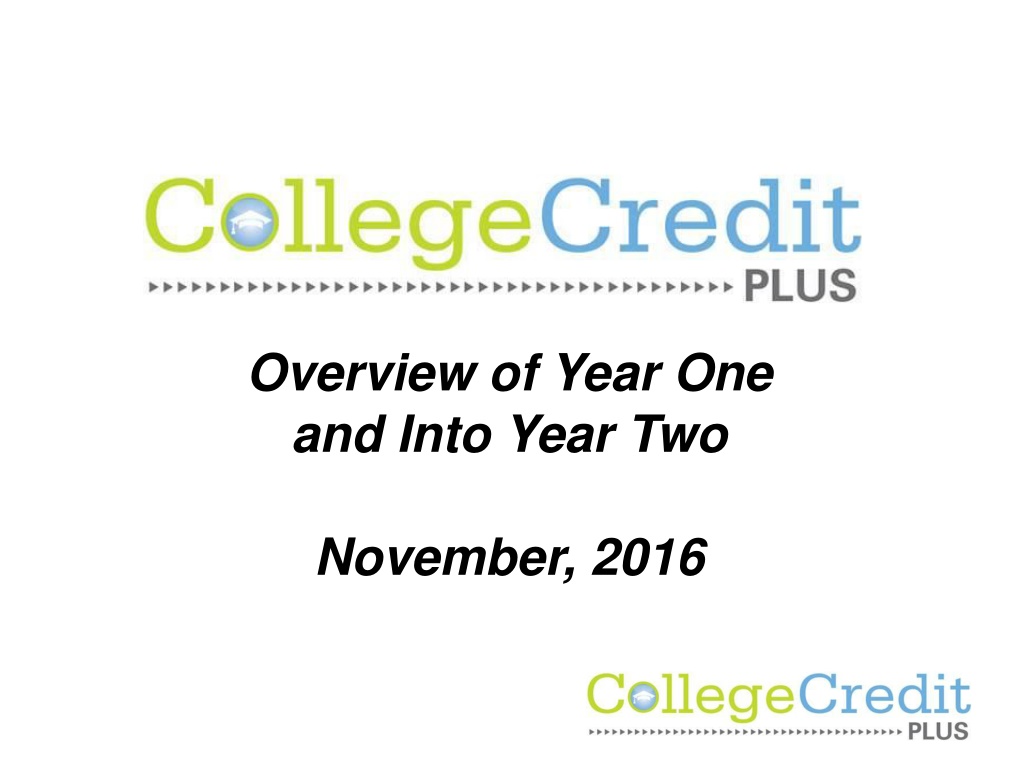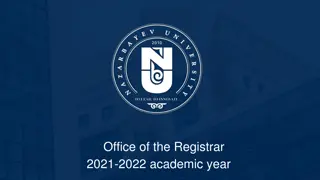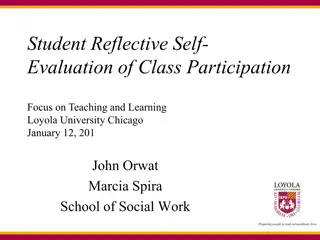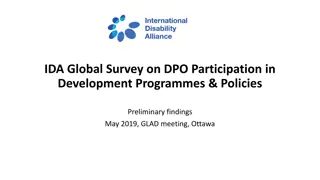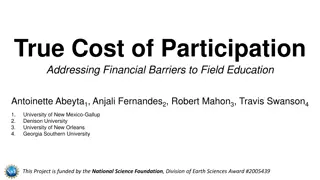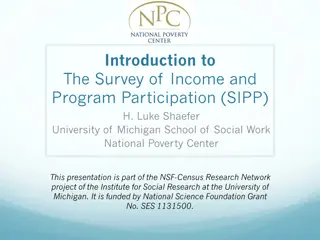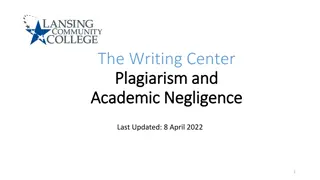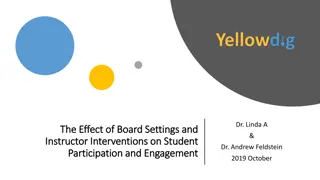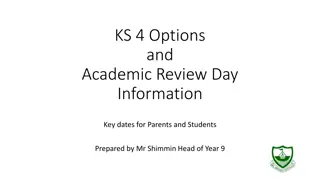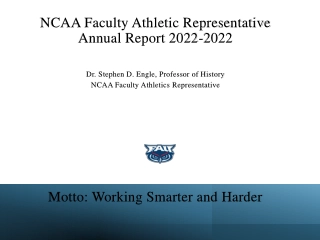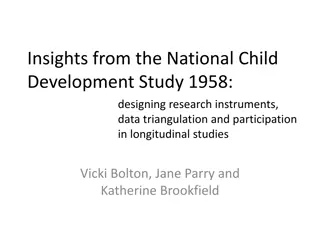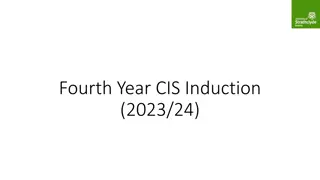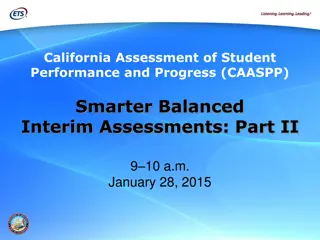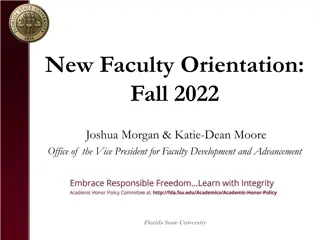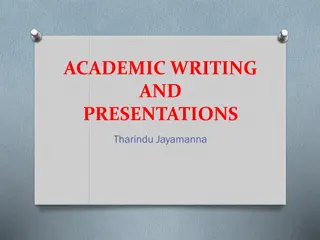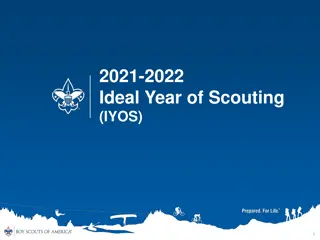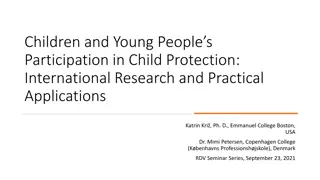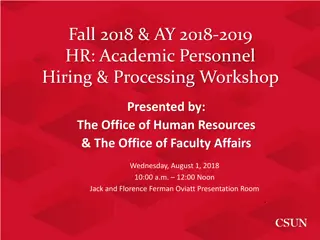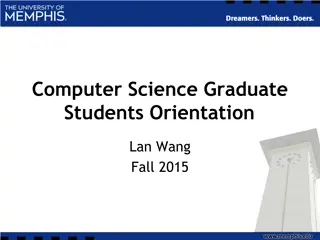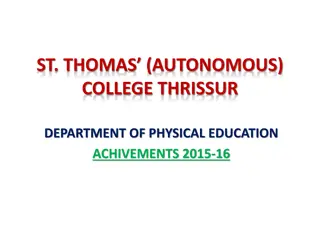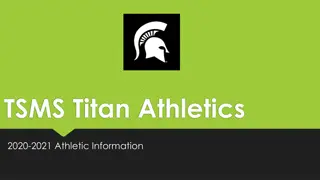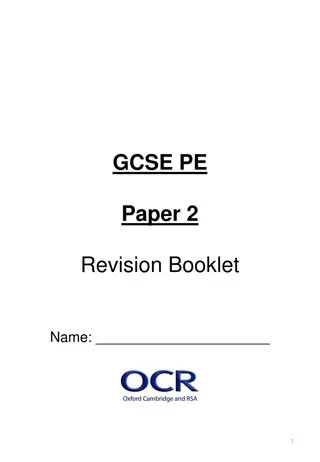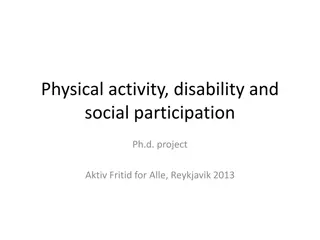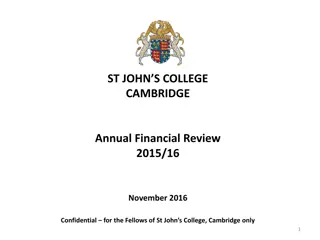Insights into the 2015-16 Academic Year Participation
The 2015-16 academic year saw over 52,000 students participating, showing an increase over the past two years. The majority of these students were from high schools, with females over-represented in the CCP student population. Disparities were observed based on racial/ethnic categories, and about 14% of CCP students were economically disadvantaged. Common assessments for college readiness included the ACT and Compass, with some students being denied admission. Overall, most students took 1 or 2 courses for college credit.
Download Presentation

Please find below an Image/Link to download the presentation.
The content on the website is provided AS IS for your information and personal use only. It may not be sold, licensed, or shared on other websites without obtaining consent from the author. Download presentation by click this link. If you encounter any issues during the download, it is possible that the publisher has removed the file from their server.
E N D
Presentation Transcript
Overview of Year One and Into Year Two November, 2016
Who participated 2015-16 Academic Year? 2015-16, over 52,000 students* Represents an increase over the past two years of PSEO + other HS (about 30,000) Students took classes from 23 Community Colleges, 13 Universities, and 35 Private Higher Education Institutions *Still finalizing Spring 2016 Data. All Data is considered preliminary 9/13/2016.
2015-16 Academic Year Of the students that had a grade level reported, the majority of CCP students were in high school (99%). *Still finalizing Spring 2016 Data. All Data is considered preliminary 9/13/2016.
2015-16 Academic Year The CCP student population was over-represented by female students (56%) as compared to the overall state population of 7th 12th grade students*, which is 49%. *2014-15 Data from ODE *Still finalizing Spring 2016 Data. All Data is considered preliminary 9/13/2016.
2015-16 Academic Year The CCP students have gaps in participation when compared to the student population in grades 7 12 based on racial/ethnic categories. *Still finalizing Spring 2016 Data. All Data is considered preliminary 9/13/2016.
2015-16 Academic Year About 14% of CCP students were in defined as economically disadvantaged status based on the definition of being eligible for free and reduced price lunch* The overall public school population in grades 7 12 is about 25% economically disadvantaged *Data from ODE
2015-16 Academic Year The most common assessments used to determine if the student was college ready were the ACT and Compass. According to surveys of the IHEs, about 2,900 students were denied admission *Still finalizing Spring 2016 Data. All Data is considered preliminary 9/13/2016.
2015-16 Academic Year The majority of students took 1 or 2 courses for college credit. *Still finalizing Spring 2016 Data. All Data is considered preliminary 9/13/2016.
2015-16 Academic Year The majority of CCP students are taking courses in five main core content areas: English (24%), social sciences (18%), math (13%), science (13%), and arts & humanities (11%). *Still finalizing Spring 2016 Data. All Data is considered preliminary 9/13/2016.
2015-16 Academic Year The most frequent level of course taking by CCP students was general studies, which is appropriate for students in their first or second year of post-secondary education. *Still finalizing Spring 2016 Data. All Data is considered preliminary 9/13/2016.
2015-16 Academic Year Just over 90% of courses taken by CCP students resulted in credits earned. *Still finalizing Spring 2016 Data. All Data is considered preliminary 9/13/2016.
2015-16 Academic Year By subject area and discipline, the majority had over 90% of students earning credits. *Still finalizing Spring 2016 Data. All Data is considered preliminary 9/13/2016.
2015-16 Academic Year The majority of the courses were offered on the high school campus (~85%) but the GPA did not vary much by the location. *Still finalizing Spring 2016 Data. All Data is considered preliminary 9/13/2016.
CCP Course Length The majority of course enrollments were the length of a term About 15% of course enrollments were longer than 16 weeks typically the entire high school year Less than 1% of course enrollments were less than 4 weeks
2015-16 Academic Year Most students have a GPA between 3.00 and 4.00 (on a 4 point scale) *Still finalizing Spring 2016 Data. All Data is considered preliminary 9/13/2016.
College-readiness determined by college. Student Must Apply and Get Admitted. Participate by getting admitted into a college. College will consider the student s score on a college readiness assessment and other college admission criteria.
Graduate with College Credit Student can earn up to 30 college credit hours per academic year; includes summer term. Counselor informs each student of specific credit eligibility. Maximum 120 college credit hours while in the program.
Weighted Grades College courses must be weighted equally to the greatest weight of Advanced Placement, International Baccalaureate or honors classes, in the same subject area. AP, IB, Honors Class College Course
2015-16 Academic Year Tuition savings, as calculated based on the advertised per credit hour amount: Over $111 million. *Still finalizing Spring 2016 Data. All Data is considered preliminary 9/13/2016.
CCP Program Reporting Report annually on the implementation and progress of the CCP program College Credit Plus Task Force formed to develop Performance Metrics and monitor the program Recommendations/strategies for continuous improvement All participating colleges and universities must report data
District may seek reimbursement if student fails or drops a course too late, unless Student is economically disadvantaged.
Required Annual Reporting # of students denied funding # of students denied admission or participation Instructional fees waived Cost of textbooks
Future Analysis Success as undergraduate Credit transferred as a result of CCP participation Retention and Persistence Rates Degree completion annual number and type of certificates, associate degrees, and bachelor s degrees awarded Terms to degree Credit Hours to degree
CCP Items to Discuss Extremely short courses, less than 1% of courses were less than 4 weeks but still awarded b/t .5 and 1 college credit hour Pass/Fail courses Monitoring quality and participation when the course is taken on the high school campus Especially courses that are entire high school year (15%) Especially courses where students are mixed CCP is not College in the Classroom
Your.. Questions Comments Suggestions
